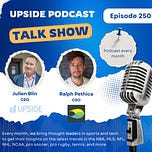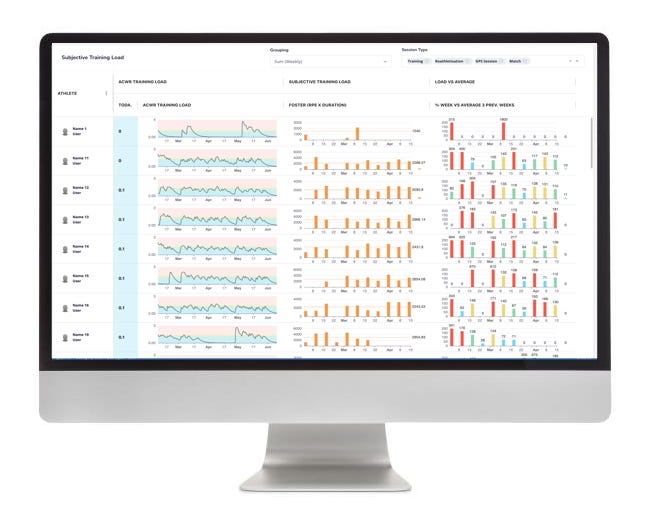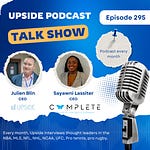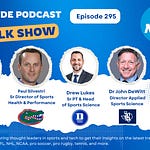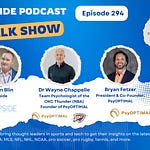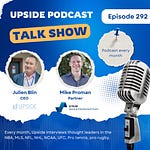Today we have the honor of interviewing Ralph Pethica , the CEO of Genetrainer, a data & personalization platform for professional sports teams.
Genetrainer builds bespoke performance software systems for professional sports teams with feature rich platforms that extend from administrative and planning functionalities, to load management and medical.
Communication: The Genetrainer platform facilitates the acquisition, processing, and correlation of performance data to improve communication and decision making.
Automation: Automating time consuming and repetitive processes, so that staff spend more time with athletes and less time behind a computer.
Getting the details right wins games. Genetrainer’s mission is to ensure that the right information is available to the right person, at the right time, in order to make the right decision.
No two platforms are the same, and all Genetrainer contracts include dedicated engineering time to customise the platform to your priorities and maximise impact.
Picture: Genetrainer’s dashboard
Customers / partners: Professional sports teams in rugby, soccer and basketball.
📝Show Notes: Through this interview, we touched on his background, his company and product, the benefits of the platform and approach to sports organizations and teams. We also talked about his competitive advantage, business model, and his plans for the next 12 months.
You can read the full transcript of the podcast interview with Ralph located at the top of this blog post.
Here are the quotes from the interview with Ralph:
Q1. Tell me about your background.
“My background is originally in biology, computer science, and then I did a PhD in what I guess would be considered computational biology and machine learning. And really our focus was on evolution of proteins—understanding evolution on a global scale. I had already been involved with other companies that I'd set up on the way, and I ended up getting involved with Google. So I actually went to work for Google as a product manager during and after my PhD for a while. And then in 2012, I left my job at Google to start the company that I run today—Genetrainer”.
Q2. Tell me about your company and product.
“When we first started this whole project, we were looking at it maybe a bit naively from the outside and thinking, well, the problem today is that we can’t personalize very well to the individual. Coming from the background of being a geneticist and also a Google product manager, you realize the power of personalization when you understand how different people respond—how they recover, how they adapt, even what they eat. Initially, we wanted to use genetics to personalize training and recovery for athletes. But we quickly realized that genetics alone is often only 10% of the story. We are a mix of our genes and our environment. So we began incorporating connected device data, subjective inputs, and other contextual data. That’s when we realized: if personalization is the cherry on the cake, then we needed to build the cake first—which is a system to collect and process data from all relevant sources in order to make better decisions. Fast forward to today, that’s what Genetrainer does.”
Q3. What are the main use cases your solution addresses?
“The goal is always to have the right information with the right person at the right time to make the right decision. There are no silver bullets anymore in high-end sport—it’s not about getting one thing right, it’s about getting all the little details right. Each staff member needs a specific piece of information to improve their decisions. But if you measure everything and show everything to everyone, you get over-interpretation and confusion. So our job is to filter, contextualize, and deliver actionable insights. Another big theme in what we do is automation. Especially for smaller staffs or lower-budget teams, there are repetitive processes—generating reports, processing data—that consume time. We help teams identify and automate those, so practitioners can spend less time behind a screen and more time with their players. That human interaction is often more important than the data itself.”
Q4. What is the state of the AMS market? What are the main challenges?
“We’re seeing a very diverse ecosystem in the AMS space today. When we started in 2012, it was technically difficult to build these platforms. Now it’s easier, so teams can build their own, or they use generic systems, or they just stay in Excel. The problem with generic systems is that they often don’t solve the specific problems teams face. And when teams try to build something in-house, they face recruiting and retention issues, plus lack of breadth to test ideas beyond their own data. We offer something in between—we include custom development with every contract. We’ve also started supporting teams who already have internal devs but need help scaling. Some teams want to host the platform on their own servers. Others have completely white-labeled our product so it becomes part of their own brand. We’re open to sharing codebases and long-term licenses because we believe that’s where the market is going: toward greater control and ownership by teams.”
Q5. What are the benefits for teams and athletes using your AMS solution?
“Every single team has different challenges—some are technical, some are cultural, some are related to the specific demands of the sport. Our whole philosophy is built around adapting to the particular needs of each team. If you try to apply a generic system, it’s really hard to get buy-in from the staff. You lose traction because it doesn’t solve their day-to-day problems. We start every project by asking: What are the specific communication or data challenges here? Then we build around that. It doesn’t mean every team needs a fully bespoke system, but even small adaptations to meet teams where they are can make a massive difference in adoption and impact.”
Q6. What is your competitive advantage?
“One of the things we decided early on is that we would never have tech support people. Everyone talking to teams is either a founder or someone who has been with the project a long time and really understands the system. That’s because the closer you are to your users, the better your product will be. It also means when a team needs something or has a question, they’re speaking to someone who can make a decision and fix it—no bureaucracy. Of course, from a scalability perspective that makes no sense—but we chose that path on purpose. It means we’re closer to the problem, we build better solutions, and we keep improving. Also, we use our own product. I’m doing a triathlon tomorrow morning and all my training data is tracked through the same system. So when we change something, we feel it ourselves immediately.”
Q7. What do teams and customers like most about your solution?
“One of the things teams really value is that we build with them, not just for them. Every contract includes custom development time. Teams can literally say, ‘We need this feature built,’ and we’ll scope it, agree on the delivery date, and make it happen. We even bake specific features into contracts with deadlines—if we don’t deliver, there’s no contract. That level of partnership is rare. On top of that, because they’re working directly with founders and engineers, things get done quickly and they feel heard. They also know we understand the domain deeply—we know what it’s like to be on a high-performance team, to need something now, to have stakes attached to data.”
Q8. Tell me about your business model.
“It’s a classic software-as-a-service model—teams sign annual contracts. The price depends on the size of the deployment, the number of athletes, and the complexity of custom work. It usually starts around $10K for very small implementations and goes up depending on scope. What makes us different is that every contract includes development hours, which means you’re not just buying software—you’re buying access to an engineering team that will build what you need. On top of that, teams can negotiate larger feature builds into the contract with hard deadlines. So if they say, ‘We want this performance review system integrated by the start of the season,’ we’ll include that in writing and deliver. It’s collaborative, flexible, and outcome-focused.”
Q9. What are your plans for the next 12 months?
“We’re expanding internationally—working with more national teams, which is really exciting. One major priority is using AI in more impactful, rather than superficial, ways. We’re not just trying to tick the AI buzzword box. We’re exploring real use cases—like enabling staff to query their data in natural language and get precise answers: ‘Which players are trending in a certain metric?’ ‘How much training load did we accumulate this week?’ That kind of real utility is where AI can shine. We’re also revamping the athlete-facing mobile app. It’s not just about showing players their data. It’s about showing them meaningful context. For example, they log an RPE, and we show them how it compares to their last 10 sessions, what it correlates with, and what that might imply. Lastly, we’re using passive phone data—like motion sensors—to gather useful insights on sleep, background activity, even circadian rhythms. These invisible data streams can be powerful over time.”
You may also like:
🔥Upside: AMS Ecosystem Analysis: Key Trends, Vendors and Recommendations to Teams (2nd Edition)
AMS vendors market analysis: Key Players, Trends, Recommendations to Pro Teams
🎙️ Upside Chat with Dr Richard Albright (CEO) & Dr Phil Harrington (CMO), Summus Medical Laser
Today we have the honor of interviewing Dr Richard Albright, CEO of Summus Medical Laser, a leading class 4 laser therapy device company. Richard was joined by Dr Phil Harrington, the Chief Medical Officer of the company.

